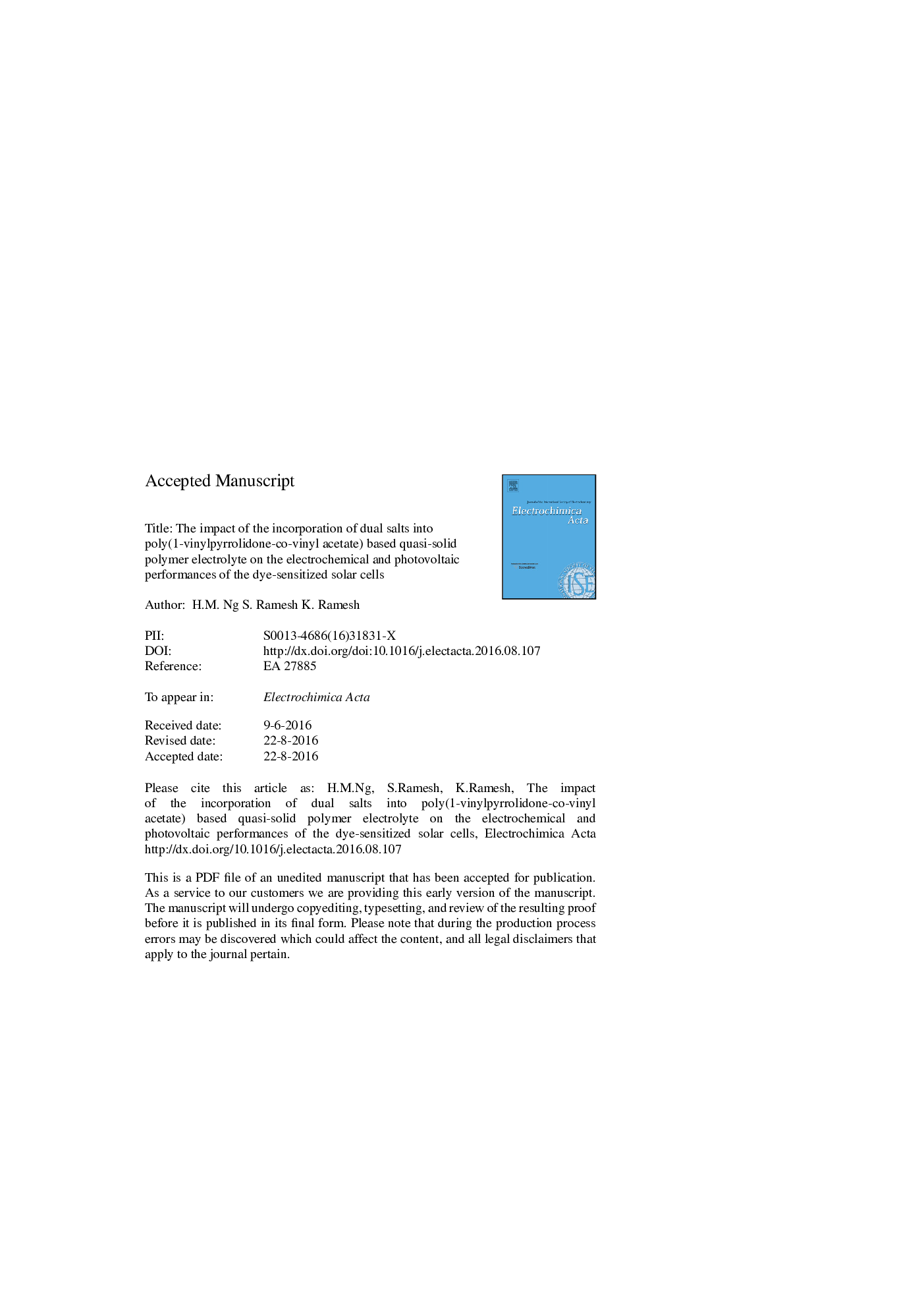| Article ID | Journal | Published Year | Pages | File Type |
|---|---|---|---|---|
| 4767774 | Electrochimica Acta | 2016 | 28 Pages |
Abstract
The incorporation of two different type of iodide salts in the quasi-solid polymer electrolyte (QSPE) has been reported previously to have the ability to enhance the electrical performance of the QSPE and photovoltaic performance in the application of dye-sensitized solar cells (DSSCs). In this research, potassium iodide (KI) and tetrapropylammonium iodide (Pr4NI) salts were used as the mobile ions providers for the poly(1-vinylpyrrolidone-co-vinyl acetate) (P(VP-co-VAc)) based quasi-solid polymer electrolytes (QSPEs). Dual salt system utilizing these two different salts will show improvement in the performance of the QSPE since they have different size and other characteristics. The resultant QSPEs with the dual iodide salts system in this research show better ionic conductivity compared to the QSPE with a single type of salt. The QSPE samples were sandwiched between a mesoporous nanocrystalline TiO2 coated fluorine-doped tin oxide (FTO) glass which works as the photoelectrode and a platinum (Pt) coated FTO as the counter electrode in order to form a functional P(VP-co-VAc)-based QSPE DSSC. Cells with either KI or Pr4NI, with identical QSPE compositions, were able to reach efficiencies of only 2.11% and 1.71% respectively. Interestingly, the cell with the dual iodide salts system under certain composition could display power conversion efficiency (PCE) of 5.53% with maximum short circuit density (Jsc) of 14.07Â mAÂ cmâ2, open circuit voltage (Voc) of 0.60Â V and a fill factor of 65% under standard light intensity of 100Â mWÂ cmâ2 irradiation of AM 1.5 sunlight. The cells have also been studied under different illumination condition and it was found that the overall photocurrent density of the cells is not only limited by the charge diffusion inside the QSPE samples. Electrochemical impedance studies of these cells have been studied to understand more on the electrical properties of the DSSCs. Tafel measurements which were carried out with two symmetrical Pt electrode has also been studied and shows that the dual salt system has higher electrocatalytic activity.
Keywords
Related Topics
Physical Sciences and Engineering
Chemical Engineering
Chemical Engineering (General)
Authors
H.M. Ng, S. Ramesh, K. Ramesh,
